#abazins
Explore tagged Tumblr posts
Text
Circassian Genocide 160th Year Commemoration in London, Britain. 🏴🇬🇧
Credit: Zak Irfan
YouTube Link: https://youtu.be/C7ss90k0gWI?si=hsY8XuOZQkVUijhZ
0 notes
Text

Abazin girls from Biberdovsky village, Kuban region.
Photographed by D.I. Ermakov, 1880-1890s
#karachaycherkessia#north caucasus#caucasusmountains#caucasus#culture#kavkaz#caucasian#abazin#abaza#west asia#eastern europe
3 notes
·
View notes
Text

Circassians and Abazins
Abazin and Circassian dancers at a concert in Damascus. Syria, 1950s
1 note
·
View note
Text
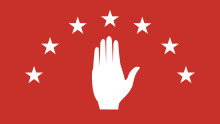
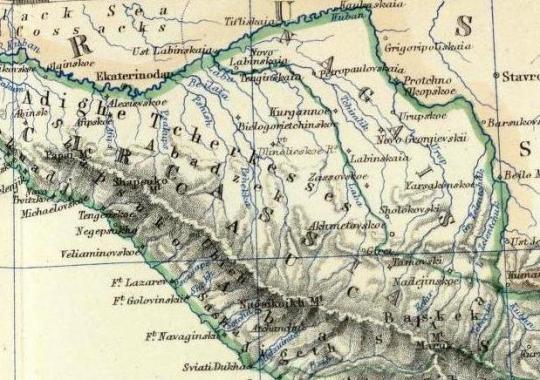
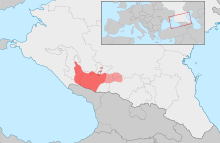
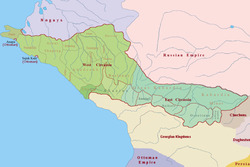
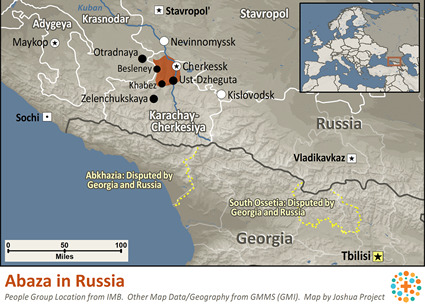

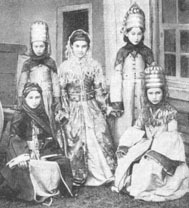
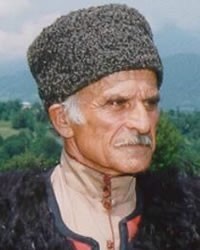
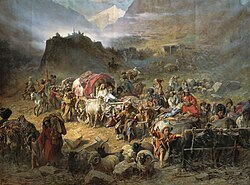
2) Abazyni, Abazowie, Abazyjczycy, Abazyńczycy, Abazin, Abazinians, Abaza (Abaza i Abchaz: Абаза; czerkieski: Абазэхэр; rosyjski: Абазины; turecki: Abazalar; arabski: أباظة) - grupa etniczna północno-zachodniego Kaukazu, blisko spokrewniona z Abchazami i Czerkiesami. Obecnie mieszkają głównie w Turcji, Syrii, Libanie, Jordanii, Egipcie oraz w Karaczajo-Czerkiesji i Kraju Stawropolskim na Północnym Kaukazie w Rosji. Tapanta (ru: Тапанта), gałąź Abazy, żyła pomiędzy księstwami Besleney i Kabardyjczykami na górnym Kubaniu. Lud Abaza historycznie mówi językiem Abaza, językiem północno-zachodnio-kaukaskim, blisko spokrewnionym z abchaskim i czerkieskim. W Karaczajo-Czerkiesji mówi się dwoma dialektami języka abaza: aszkharua i tapanta. Kultura i tradycje Abazinów są podobne do Czerkiesów. Na wielu starych mapach terytorium Abazinu zaznaczone jest jako część Czerkiesów (Adygei). Według rosyjskiego spisu ludności z 2010 roku w Rosji było 43 341 Abazynów.
Rdzenna ludność (grupa etniczna) północnego Kaukazu, blisko spokrewniona z Czerkiesami. Zamieszkują północne stoki Kaukazu, głównie w Karaczajo-Czerkiesji (ok. 27,5 tys. osób), a także w niewielkich grupach w Adygei w okolicach Kisłowodzka. Około 60% to ludność wiejska. Ogólną liczbę Abazynów zamieszkujących Federację Rosyjską ocenia się na ok. 33 tys. osób (dane ze spisu w 1989). Niewielkie grupy zamieszkują także Turcję, Syrię, Jordanię i Liban (w sumie około 11 tysięcy osób), dokąd wyemigrowali w połowie XIX wieku, w okresie wojen kaukaskich (1817–1864). Abazyni posługują się językiem abazyńskim, należącym do grupy abchasko-adygejskiej języków kaukaskich. Pod względem etnograficznym Abazyni dzielą się na dwie grupy: Tapanta i Szkaraua. Wyznają przede wszystkim islam sunnicki.
2500 lat temu grecki historyk Herodot odnotowuje, że greccy marynarze napotkali plemię zwane Abaza wzdłuż wschodnich wybrzeży Morza Czarnego. Potomkowie Abazy wyemigrowali później na północny wschód, w góry Kaukazu i w ciągu ostatnich 1000 lat stali się zaciekłymi muzułmanami. Wielu zginęło w wojnach na Kaukazie z Imperium Rosyjskim w połowie XIX wieku. Do miast Abaza należą Kara-Pago, Kubina, Psikh, El 'burgan, Inzhich-Chukun, Koi-dan, Abaza-Khabl ', Malo-Abazinka, Tapanta, Krasnovostochni, Novokuvinski, Starokuvinski, Abazakt i Ap-sua. Abaza, wojowniczy lud, zaznali niewiele łaski. Ich starożytny język jest fascynujący – składa się z 63 dźwięków spółgłosek i tylko dwóch samogłosek! Dla osoby z zewnątrz jest to zdecydowanie kęs intensywnych dźwięków. Lud Abaza to muzułmanie sunnici, którzy wierzą, że najwyższy Bóg, Allah, przemówił przez swojego proroka Mahometa i nauczył ludzkość, jak prowadzić prawe życie poprzez Koran i hadisy. Aby wieść sprawiedliwe życie, musisz wypowiedzieć szahadę (wyznanie wiary), modlić się pięć razy dziennie twarzą do Mekki, pościć od wschodu do zachodu słońca w miesiącu Ramadan, dawać jałmużnę biednym i odbyć pielgrzymkę do Mekki, jeśli masz środki. Muzułmanom zabrania się picia alkoholu, jedzenia wieprzowiny, hazardu, kradzieży, oczerniania i robienia bożków. Gromadzą się na zbiorowej modlitwie w piątkowe popołudnia w meczecie, miejscu ich kultu. Dwa główne święta muzułmanów sunnickich to Id al Fitr, przerwanie miesięcznego postu, i Id al Adha, świętowanie gotowości Abrahama do poświęcenia syna Allahowi. Praktyki religijne sunnitów są niezachwiane i proste. Wierzą, że Allah z góry określił nasz los; minimalizują wolną wolę. W większości krajów muzułmańskich codzienne potrzeby ludzi zależą od świata duchów, ponieważ uważają Allaha za zbyt odległego. Allah może zadecydować o ich wiecznym zbawieniu, ale duchy decydują o tym, jak dobrze żyjemy w codziennym życiu. Z tego powodu muszą uspokajać duchy. Często używają uroków i amuletów, aby pomóc im siłami duchowymi.
0 notes
Text
So i am over 7,000 words now and the housekeeping continues apace. It’s a fairly standard three act story and the draft of act one is nearly done. So far I am still liking telling the story in the past with journal entries carrying the details you need in the present. From act two things move fast so I need to be ready. It’s time to start making sure my trail is being lightly marked so people aren’t utterly confused. So, the people Loradonna works for were tricky to name. I jokingly called them The Consortium after A Town Called Eureka but that didn’t work for this story. We looked up similar words in other languages and camarilla came up. The origins of it relate to Small Room. I. Like. It. So that’s my lead in. The leader is The Door. There is one way in, one way out and it’s through them. They are very similar to the Upright Man in Krondor and I am so very comfortable with that. Now, these might not be in English when I write them properly. I will likely be creating words for these but now you know my inspiration. I am thrilled to introduce them. Lora meets them after her botched assassination of Tal. The box of heads laced with toxic talc and enchanted little animal toys with acid that got loose in the chaos of the talc explosion created havoc and serious injury which catches their attention. In her panic to cover it up she makes a deal.
I have also, theoretically, come up with the introduction of the island mages for young Tala. She’s going to the tea shop for the first time since her Mum died and the old dudes gambling, drinking tea and making dodgy deals upstairs have a story for the sad little girl. I almost want her and Loebos to be a thing but he’s known her since she was a young child and I can’t. They’d make an amazing couple but they already do make an amazing team and every grey path girl needs a connected uncle who can help her get in to trouble. The island mages aren’t a shady organisation like the small room. They generally operate indirectly and just want to exist and medal in affairs with no need for more power. They are nameless. The island needs a name though. I have no idea.
The Sorta Plan for the end of act one and start of act two straight from my notes:
Tal’s recovery – look for notes from scene on the roof, convo between Artem and Tal about revenge/vengeance.
First trip to tea house (needs name, possibly of a plant) and her meeting Loebos since her mum’s funeral
Fit in reaction of Loradonna to box of heads. She wasn’t there but hears about it. Not sure yet how i want her to respond. Prudence probably and fear of her summons.
Wants to keep training
Back to the ruin, break down and getting back in (find notes)
Books, experiments and clues, oh my
First hears about disappearing island (she ultimately becomes adept at displacement magic following this thread later
Journal entries following trail to her dad.
Ends with her finishing new disguise as she thinks about her first long term one for the college of magical sciences.
Act two begins with trip the tepui.
Should probably describe Tal. Dark hair, green/hazel eyes from dad, think Caucasian (chechnya, armenia, abazin, lezgin), full lips. Tal is around 1.8 m or 5’10/11″ i think. Haughty and a little brittle.
Tepui elves are not very tall. The tallest are around Tal’s height. Flatlands elves are taller. Her dad is around the same height. So they share eyes (maybe shape too) and height. Complexion, hair, facial features themselves from mom.
All her disguises have dark eyes like her mom. She’s not sure about her light ones because she correctly assumes they are like her dad’s.
Camarilla – little room, the door
0 notes
Photo
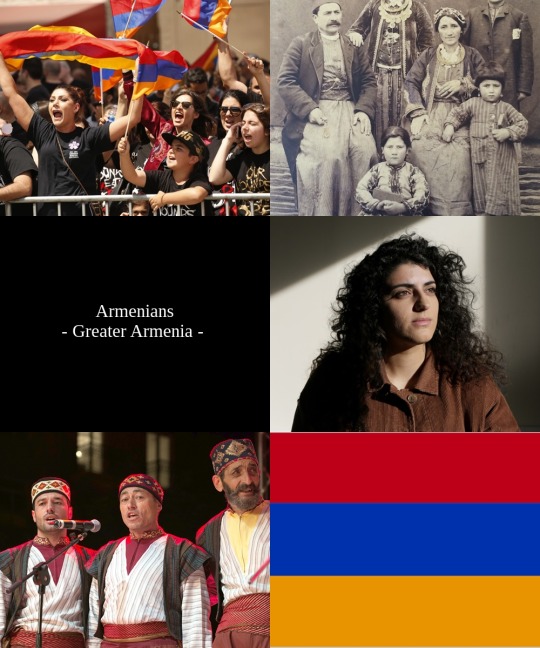

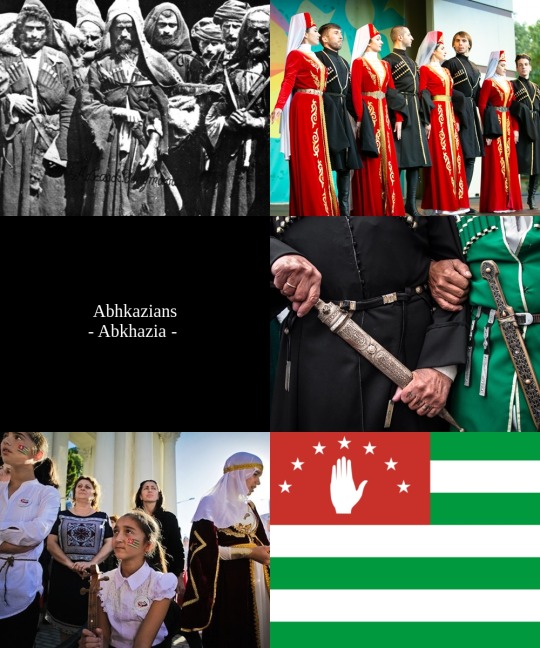
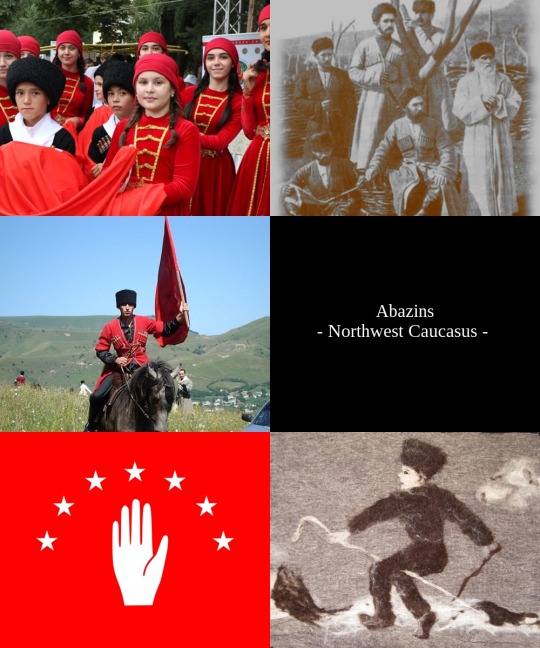


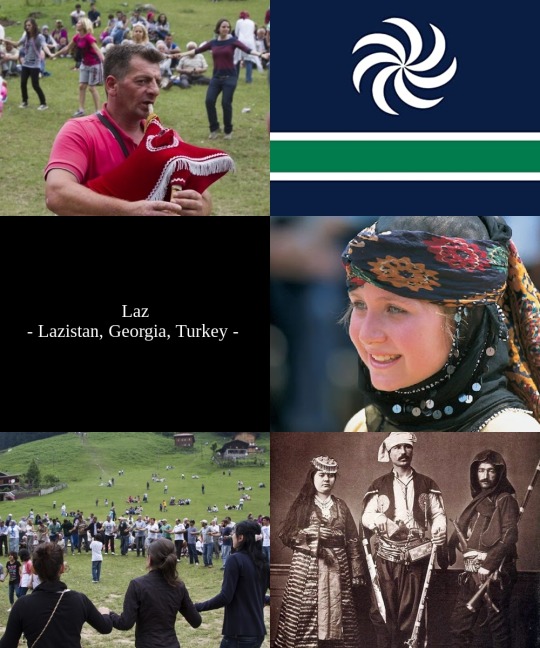
Aesthetic of the ethnies of the world ! Caucasian ethnies part 2 !
The Armenians are a indo-european people inhabitants of the region of Greater Armenia, and the country of Armenia. They speak armenian. They are christian. There are around 6 to 8 millions of them, with 2.9 millions in Armenia, 1 to 2.9 millions in Russia, and 1 million in the United States.
The Georgians are a kartvelian people inhabitants of the country of Georgia. They speak georgian and kartvelian languages. They are Eastern Orthodox christian. There are around 4 millions of them.
The Abkhazians are a northwest caucasian people inhabitants of the region of Abkhazia, officially in Georgia. They speak abkhaz, russian, georgian and turkish. They are Abkhazian eastern orthodox and Sunni muslim. There are 748 000 of them, with 600 000 in Turkey.
The Abazins are a northwest caucasian people inhabitants of the region of Abazinia, officially in Russia. They speak abaza, russian, turkish and arabic. They are Sunni muslim. There are around 150 000 of them.
The Lezgins are a northeast caucasian people inhabitants of the region of Lezgistan, officially in Russia and Azerbaijan. They speak lezgian. They are Sunni muslim. There are 1.2 millions of them.
The Ossetians are a indo-european people inhabitants of the region of South Ossetia and North Ossetia-Alania, officially in Russia. They speak ossetian, russian, georgian. They are Eastern Orthodox christian. There are around 600 000 of them.
The Lazs are a kartvelian people inhabitants of the region of Lazistan, officially in Turkey and Georgia. They speak laz, georgian and turkish. They are Sunni muslim for the Lazs in Turkey, and Georgian Orthodox for the Lazs in Georgia. There are around 150 000 to 1 million of them.
Here it is ! Those aesthetics are part of a serie. We will cover most of the biggest ethnies of the world. Just for fun !
#Ethnies of the world#Aesthetic#geography#moodboard#ethnies#ethnology#armenian#armenians#armenia#georgian#georgians#georgia#abkhazian#abkhazia#abkhazians#abazins#abazin#Abazinia#Ossetians#ossetian#ossetia#lazs#laz#Lazistan#kartvelia#anthropology#asia#europe
24 notes
·
View notes
Photo




Abazins - are an ethnic group of the Northwest Caucasus, living in Karachay-Cherkessia and Stavropol Krai. The Abazin originally inhabited the Sadzen region in the western part of Abkhazia and migrated from Abkhazia to Abazinia in 14th and 15th centuries.
Абазины - этническая группа Северо-Западного Кавказа, проживающая в Карачаево-Черкесии и Ставропольском крае. Абазины изначально проживали в Садзенской области в западной части Абхазии и мигрировали из Абхазии в Абазинию в 14 и 15 веках.
#history in pictures#ethnic of russia#abazins#caucasus#история в картинках#народы россии#абазины#кавказ
39 notes
·
View notes
Text
Re: the conversation on the colonialism and racism of cottagecore, it's very clear that Europeans think indigenous people don't exist where they live or that they're indigenous because they're Irish or whatever the fuck, so as a Vaqueira, I think it’s time Europeans start understanding whose land they’re on and that there are indigenous people everywhere, so i've made a short, incomplete list of indigenous and nomadic peoples of Europe. Feel free to look up more about them, especially if you're living on their land:
Abazins (Russia, Georgia, Abkhazia)
Adyghe/Circassian people (Russia, Turkey)
Aromanians/Vlachs (Greece, Romania, Albania, Serbia, North Macedonia, Bulgaria)
Ashkali Romani (Kosovo, Albania, North Macedonia)
Avars (Russia)
Balkars (Russia)
Bashkirs (Russia)
Basque people (Spain, France)
Bats people (Georgia)
Bergitka Romani (Poland, Slovakia, Hungary)
Boyash Romani (Romania, Hungary, Croatia, Serbia, Slovakia)
Boykos (Ukraine, Hungary, Slovakia, Poland)
Calé Romani (Spain, Portugal, France)
Cascarot Romani (France, Spain)
Chechens (Chechnya, Russia)
Crimean Tatars (Crimea)
Dargins (Russia)
Erlides Romani (Greece)
Erromintxela (Spain, France)
Finnish Kale Romani (Finland, Sweden)
Gagauz people (Moldova, Ukraine)
Gorani people (Kosovo, Albania, North Macedonia)
Gurbet Romani (Bosnia & Herzegovina, Serbia, Kosovo)
Hutsuls (Ukraine, Romania)
Ingush (Russia)
Irish Travellers (Ireland, UK)
Izhorians (Russia, Estonia)
Kalderash Romani (Romania, Ukraine, Bulgaria, Russia)
Karelians (Finland, Russia)
Komi people (Russia)
Laks (Russia)
Laz people (Turkey, Georgia)
Lemkos (Ukraine, Slovakia, Poland)
Lezgins (Russia, Azerbaijan)
Lipka Tatars (Poland, Lithuania, Belarus)
Livonians (Latvia, Estonia)
Lom people (Armenia, Georgia)
Lovari Romani (Hungary, Slovakia, Poland, Czechia, Germany)
Manouche Romani (France)
Maragatos (Spain)
Mari people (Russia)
Mingrelians (Georgia)
Mordvins (Russia)
Norwegian Travellers/Fanter (Norway)
Ossetians (Russia, South Ossetia, Georgia)
Pasiegos (Spain)
Polska Roma (Poland)
Mercheros (Spain)
Romanichal (UK)
Romanisæl (Norway, Sweden)
Ruska Roma (Russia, Ukraine, Belarus)
Sámi people (Sweden, Norway, Finland, Russia)
Sarakatsani (Greece, Bulgaria, Albania, North Macedonia)
Scottish Travellers/Indigenous Highland Travellers (UK)
Servitka Roma (Ukraine, Russia)
Setos (Estonia, Russia)
Sinti (Germany, Austria, France, Italy, Switzerland, Czechia, Netherlands, Belgium, Serbia, Croatia)
Tat people (Azerbaijan, Georgia, Russia)
Udi people (Azerbaijan, Armenia, Russia, Georgia)
Udmurts (Russia)
Ursari Romani (Romania, Bulgaria, Moldova, Serbia, Italy)
Vaqueiros de Alzada (Spain)
Veps (Russia)
Volga Tatars (Russia)
Welsh Kale Romani (UK)
Yeniche people (Germany, France, Belgium, Switzerland, Austria, Luxembourg)
Also to mention:
The millions of Jews whose homes, property, and land was stolen and never returned when they were murdered in the Shoah.
The hundreds of indigenous peoples of Asian Russia which is frequently seen as part of Europe because of its colonization by Russia.
There are many peoples that are known by few. There may be very little to no information about them in English or any language besides the official language of the country they are in. They may not have a written tradition and all written accounts of them are in old print books. They may be known only by people who live near to the region where they are. I know this is certainly true for Vaqueiros and the nomadic peoples of Spain.
Indigenous and nomadic peoples of Europe may be called ‘hill peoples’, ‘nomads’, or ‘cursed peoples’. They have lived in your country for hundreds or thousands of years, but were or are still not considered proper citizens. They live in their own territory by their traditional lifestyle, or in the city as part of your society, or in diaspora across the world. They unequally face land theft and environmental racism. They are hardly represented, if at all, and face challenges like insufficient infrastructure, education, healthcare, or access to water. It's time to learn who your neighbors are. We want to be known. We are in small numbers because of the land theft and cultural destruction by the European countries you live in.
If this description rings a bell for you, or if your group isn’t up here, feel free to add an indigenous or nomadic people in Europe you know!
DO NOT fuck around on this post or i will tear your head clean off
#there are peoples i didnt include on this list for a reason#see: the irish statement#cottagecore#indigenous#nomadic#also i decided to divide up the romani subgroups bc i divided the tatar groups#also i feel like some western europeans have the impression#that romani people do not live/are few/dont have a distinct culture in their country#hmmm!#i tried to find links that didnt use the G word#but it was very hard
2K notes
·
View notes
Text


Abazin Woman, Abkhazia - Caucasus (1897)
#abhaz#ahbazin#abkhazia#Caucasus#Caucasian#1800s#west Asia#vintage photography#cultures#folk clothing
49 notes
·
View notes
Text
ethnic regions of the world(part 1)
Abazinia(Russia)-Abazins
Aceh(Indonesia)-Acehnese
Edo state(Nigeria)-Afemai
Assam(India)-Ahom, Chutiya
Dabou(Ivory Coast)-Adjoukrou
Gold Coast(Ghana)-Akan
Ambon Island(Indonesia)-Ambonese
Amharia(Ethiiopia)-Amhara
Akwa Ibom State(Nigeria)-Anaang
Apacheria (United States)-Apache
Kaduna State (South Sudan)-Atyap
Dagestan (Russia)-Avars, Dargins
Awadh (India)-Awadhis
Central Highlands (Vietnam)-Bahnar
Dali Bai Autonomous Prefecture (China)-Bai
Bakossi Mountains (Cameroon)-Bakossi
Bali (Indonesia)-Balinese
Kabardino-Balkaria (Russia)-Balkars
Gilgit-Baltistan (Pakistan)-Balti
Cameroon (West and Northwest Regions)-Bamileke
West Region (Cameroon)-Bamum
South Kalimantan (Indonesia)-Banjarese
Bassaland (Liberia)-Bassa
Bashkortostan (Russia)-Bashkirs North Sumatra (Indonesia)-Batak
Plateau State(Nigeria)-Berom
Jakarta(Indonesia)-Betawis
Bicol Region(Philippines)-Bicolanos
Sarawak(Malaysia)-Bidayuh
Lake Fitri (Chad)-Bilala
Soccsksargen (Philippines)-Blaan
Bas-Uele (Democratic Republic of the Congo)-Boa
Bodoland (India)-Bodo
Guizhou (China)-Bouyei
Balochistan (Pakistan)-Brahuis
Brittany (France)-Bretons
Wamba Territory (Democratic Republic of the Congo)-Budus
South Sulawesi (Indonesia)-Buginese
Gilgit-Baltistan (Pakistan)-Burusho Buton (Indonesia)-Butonese
Mariana Islands (United States)-Chamorro
Chechnya (Russia)-Chechens
Chuuk Lagoon (Federated States of Micronesia)-Chuukese
Chuvashia (Russia)-Chuvash
Circassia (Russia)-Circassians
Chittagong Hill Tracts (Bangladesh)-Chakmas
Cornwall (United Kingdom)-Cornish
Corsica (France)-Corsicans
Cuyo Archipelago (Philippines)-Cuyunon
Kingdom of Dagbon (Ghana)-Dagombas
Damaraland (Namibia)-Damara
Deccan (South-Central India)-Deccani
Bandiagara Escarpment (Mali)-Dogon
Jammu Division (India)-Dogra
Gujarat(India)-Dubla, Gujarati
3 notes
·
View notes
Note
Hi, i was just asking can you list consorts that were of noble birth.
Mal Hatun (consort of Osman I): probably the daughter of the ruler of the umeri principality
Asporça Hatun (consort of Orhan): probably the daughter of a byzantine lord
Theodora Kantakuzenos (consort of Orhan): byzantine princess
Tamara Hatun (Murad I): Bulgarian princess
Olivera Despina Hatun (Bayezid I): Serbian princess
Emine Hatun (Mehmed I): Dulkadir princess
Mara Hatun (Murad II): Serbian princess
Sitti Mukrime Hatun (Mehmed II): Dulkadir princess
Servetseza Başkadınefendi (Abdülmecid I): princess of the Temruko line
Hoşyar Kadınefendi (Abdülmecid I): daughter of Georgian nobleman Zurab Bey Tuskia
Verdicenan Kadınefendi (Abdülmecid I): princess of the Açba family
Şayan Kadınefendi (Abdülmecid I): her mother was a member of the Kucba family
Gülistu Kadınefendi (Abdülmecid I): princess of the Çaçba family
Zerrinmelek Hanım(Abdülmecid I): princess of the Klıç dynasty
Nesrin Hanım(Abdülmecid I): daughter of Georgian nobleman Manuçar Bey Asemiani
Navek-i Visal Hanım (Abdülmecid I): princess of the Biberd family
Neveser Hanım(Abdülmecid I): daughter of Abazin nobleman Mısost Bey Eşba
Nalan-ı Dil Hanım(Abdülmecid I): daughter of Prince Çıpakue Natıkhu Bey
Şayeste Hanım(Abdülmecid I): princess of the Inalipa family
Ayşe Serfiraz Hanım(Abdülmecid I): princess of the Liah (or Lakh) family
Safderun Hanım (Abdülmecid I): daughter of a Circassian princess
Dürr-i Nev Kadınefendi (Abdülaziz): daughter of Prince Mahmud Bey Dziapş-lpa
Edadil Kadınefendi (Abdülaziz): daughter of Abkhaz Prince Aredba Tandal Bey
Neşerek Kadınefendi (Abdülaziz): daughter of Prince İsmail Bey Zevş-Barakay
Gevheri Kadınefendi (Abdülaziz): daughter of Abkhazian nbleman Salih Bey
Reftar-ı dil Kadınefendi (Murad V): daughter of the noble Circassian family Hatko
Şayan Kadınefendi (Murad V): daughter of Prince Batir Bey Zan
Filizten Hanım (Murad V): daughter of Abazin prince Şahin Bey Çaabalurhva
Nazikeda Kadınefendi (Abdülhamid II): daughter of Abazin prince Arzakan Bey Tsanba
Safinaz Kadınefendi (Abdülhamid II): daughter of a Circassian princess
Bedrifelek Kadınefendi (Abdülhamid II): daughter of Prince Karzeg Mehmed Bey
Bidar Kadınefendi (Abdülhamid II): daughter of Prince Ibrahim Talustan Bey
Mezide Mestan Kadınefendi (Abdülhamid II): daughter of nobleman Kaymat Bey Mikanba
Sazkar Başhanımefendi (Abdülhamid II): daughter of Abazin nobleman Maan Bata Bey
Peyveste Hanım (Abdülhamid II): daughter of Abazin prince Eymhaa Osman Bey (Emuhvari)
Fatma Pesend Hanım (Abdülhamid II): daughter of Abazin prince Sami Bey Açba and a Tatar princess, member of the Giray dynasty
Nazperver Kadınefendi (Mehmed V): princess of the Abazin Çikotua dynasty
Emine Nazikeda Kadınefendi (Mehmed VI): daughter of Abkhazian Prince Hasan Ali Marşania
I’m not sure it’s all of them, I might have missed a couple-- if I did, I’ll add them later
#anon#ask: ottoman history#mal hatun#asporca hatun#theodora kantakuzenos#tamara hatun#olivera despina hatun#emine hatun#sitti mukrime hatun#servetseza kadin#hosyar kadin (abdulmecid i)#verdicenan kadin#sayan kadin (abdulmecid i)#gulistu kadin#zerrinmelek hanim#nesrin hanim#navekmisal hanim#neveser hanim#nalandil hanim#sayeste hanim#serfiraz hanim#safderun hanim#durrinev kadin#edadil kadin#neserek kadin#gevheri kadin#reftaridil kadin#sayan kadin#filizten hanim#nazikeda kadin
46 notes
·
View notes
Photo

Abazin language
Abaza alphabet
Abazin culture
0 notes
Photo

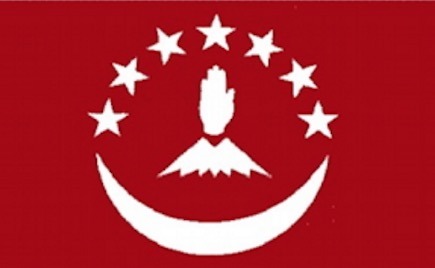
2) Abazyni, Abazyjczycy (abaz. абаза, abaza; ros. абазины, abaziny) – rdzenna ludność (grupa etniczna) północnego Kaukazu, blisko spokrewniona z Czerkiesami. Zamieszkują północne stoki Kaukazu, głównie w Karaczajo-Czerkiesji (ok. 27,5 tys. osób), a także w niewielkich grupach w Adygei w okolicach Kisłowodska. Około 60% to ludność wiejska. Ogólną liczbę Abazynów zamieszkujących Federację Rosyjską ocenia się na ok. 33 tys. osób (dane ze spisu z 1989 r.). Niewielkie grupy zamieszkują także Turcję, Syrię, Jordanię oraz Liban (w sumie ok. 11 tys. osób), dokąd wyemigrowali w połowie XIX, w okresie wojen kaukaskich (1817–1864). Abazyni posługują się językiem abazyńskim, należącym do grupy abchasko-adygejskiej języków kaukaskich. Pod względem etnograficznym Abazyni dzielą się na dwie grupy: Tapanta i Szkaraua. Wyznają przede wszystkim islam sunnicki. Abaza wywodzą się od rdzennych mieszkańców Kaukazu, jednego z licznych małych narodów zamieszkujących tereny górskie. Kilka plemion zjednoczyło się w VIII lub na początku IX wieku n.e., tworząc naród Abaza. Migrowali na wyżyny w XIV i XV wieku. Zredukowani do wasali książąt Kabard w XVII wieku, Abaza później znalazła się pod wpływem tureckim, w większości przyjęli islamem. Rosjanie najechali ten obszar pod koniec XVIII wieku. Uwikłani w wojny z Rosjanami, do 1864 r. do 45 000 Abaza uciekli lub wyemigrowali na terytorium Turcji. Abaza to lud zachodniokaukaski, który nazywa się Ashvy lub Apsua, imię, które dzielą z pokrewnymi Abchazemi. Tradycyjnie ludność wyżynna wiejska, obecnie ponad jedna trzecia mieszka na obszarach miejskich. Język jest częścią abchazo-adygijskiej grupy kaukazkiej, którymi posługuje się około 95 procent jako ich pierwszy język. Fonetycznie uważany jest za najtrudniejszy ze wszystkich języków Rosji. Większość Abaza to sunnici z obrządku hanafickiego, z niewielką mniejszością chrześcijańską stanowiącą około 3 procent populacji. Rewolucja rosyjska z 1917 r. przyniosła chaos, a w 1920 r. ustanowiono rządy sowieckie. Józef Stalin, podejrzliwy wobec muzułmanów rasy kaukaskiej, w 1943 r. przygotował plan deportacji Abazy. Chociaż plan został przełożony, został wskrzeszony w 1953 r., choć nigdy nie został zrealizowany z powodu Śmierć Stalina. Upadek Związku Radzieckiego w 1991 roku pobudził proklamację Republiki Abazin w listopadzie 1991 roku. Kiedy ich republika została odrzucona przez nowy rząd rosyjski, Abazastha stała się częścią Republiki Karaczajsko-Czerkieskiej. Ciągła agitacja zaowocowała w 2009 r. utworzeniem niewielkiego okręgu autonomicznego, ale wielu nadal domaga się większego terytorium rozciągającego się na Kraj Stawropolski.
0 notes
Text
Sadz
68) Sadz lub Asadzwa, także Jigets, Dżigeci, to subetniczna grupa Abchazów. Czasami uważa się, że pochodzą z plemienia Sanigoi, o którym wspominali autorzy klasyki. W VI wieku utworzyli księstwo plemienne, które później połączyło się z Abasgoi, Apsilae i Missimianoi w Królestwo Abchazji. Do 1864 r. Sadz mieszkali na wybrzeżu Morza Czarnego na północ od Gagry, aż do rzeki Chosta (rzeki Khamysh). Utworzyli oni obszar Sadzynia, na który składały się dobra klanów Kamysh, Arydba, Amarshan i Gechba, pod hegemonią klanu Tsanba. Z Sadzi pochodzili także książęta Ubykh Oblagua, Chizmaa i Dziash. Niektórzy uważają, że w XII-XIV wieku część Sadzi została zmuszona do przesiedlenia na północne zbocze Kaukazu Wielkiego pod naporem Ubychów. Utworzyli tam lud Abazin. To tylko jedna z teorii wyjaśniających migrację z Abchazji przodków dzisiejszego ludu Abaza. Po zakończeniu wojny rosyjsko-czerkieskiej w 1864 r. większość Sadzi została zmuszona do zmiany muhajirów, przenosząc się do Imperium Osmańskiego. Część z nich osiedliła się w Adżarii (wówczas w posiadaniu osmańskim). Obecnie dialektem sadzkim języka abchaskiego mówi się tylko w Turcji. Składa się z subdialektów Akhaltsys i Tswyzhy. Plemiona Sadz, Aibga i Achchipsou z Abchazji były ostatnimi grupami etnicznymi, które stawiły opór rosyjskim postępom podczas wojny na Kaukazie. Ostatnimi plemionami podbitymi przez Rosjan byli Ahchypsy i Aibga, którzy mieszkali w okolicach dzisiejszej Krasnej Polany.
0 notes
Link
RTK3 - AKTUAL - 13.03.2019 Emisionin AKTUAL e zhvillojmë në lokalin Menza e Ramiz Sadikut në lagjen Pejton të kryeqytetit ku sot do të bisedojmë për raportin “Hidrocentralet në Kosovë problemet dhe potenciali i tyre real”, të përgatitur nga organizatat Balkan Green Foundation dhe INDEP. Po ashtu do të bisedojmë edhe rrezikun e ndotjes së ambientit dhe prishjes së rrjedhës së lumenjve nga ndërtimi i hidrocentraleve. Të gjitha këto do t’i flasim me Elion Gërgurin nga Balkan Green Foundation dhe me Dardan Abazin nga INDEP.
0 notes
Text
Kafkasya Gerçeği
Kafkasya Gerçeği Kafkasya, Karadeniz ile Hazar Denizi arasında uzanan yüksek sıradağların ve bu dağların üzerinde ve eteklerinde yer alan Abhazya, Adigey, Kabardey, Karaçay-Malkar, Osetya, Çeçen-Inguş ve Dağıstan ülkelerinin genel adıdır. Çeşitli Türk ve Hint-Avrupa kavimlerinin yanı sıra, Kafkasya’nın etnik ve sosyo-kültürel yapısının oluşumunda ve şekillenmesinde Yunan-Roma-Bizans medeniyetleri ile Ön Asya medeniyetleri de etkili olmuşlardır. Dışarıdan gelen bütün bu unsurlar Kafkasya’nın yerli kavimlerinin etnik ve kültürel yapıları ile birleşerek ortaya yeni bir sosyo-kültür kalıbı çıkarmıştır.Kafkasya halkları etnik yönden birbirleri ile karışırlarken, kültürel yönden de benzer yapılar oluşturmaya başlamışlardır. Kafkasya halklarının geleneksel hukuk sistemlerinde ve aile yapılarında da feodal ilişkilerin ve sosyal tabakalaşmanın derin izlerine rastlamak mümkündür. Kafkasya halklarının mitolojik eski inançlarında ve dinlerinde çok tanrılı inanç sisteminin etkisi görülmektedir. Ancak bütün Kafkasya halklarının eski dinî inançları üzerinde 6. yüzyıldan itibaren bölgede yayılmaya başlayan Hıristiyanlık etkili olmuştur. Bir süre sonra Hıristiyanlık inancı Kafkas halklarının eski çok tanrılı inançları arasında eriyerek semavî din olma özelliğini kaybetmiştir. 8.-19. yüzyıllar arasında Kafkasya halklarının büyük bölümü İslâmiyeti kabul etmiştir.Abhaz-Abazin, Adige, Karaçay-Malkar, Oset, Çeçen-İnguş, Lezgi, Avar, Kumuk, Lak, Dargı halklarından oluşan Kafkasya halkları, etnik ve sosyo-kültürel yönden yüzlerce yıllık bir süreç sonunda karışıp bütünleşerek, bugün akraba milliyetler haline gelmişlerdir. Bu bakımdan onları ırk ya da etnik köken kriterlerine göre sınıflandırmak ve farklı milletler olarak değerlendirmek bilimsel açıdan doğru değildir. Kafkasya halkları ancak dil gruplarına göre birbirlerinden ayrılarak sınıflandırılabilir.
Kafkasya Gerçeği
#Kafkasya Gerçeği indir#Kafkasya Gerçeği kitabını indir#Kafkasya Gerçeği kitabını pdf indir#Kafkasya Gerçeği kitabını pdf oku#Kafkasya Gerçeği kitap indir#Kafkasya Gerçeği pdf#Kafkasya Gerçeği pdf indir#Kafkasya Gerçeği pdf oku
0 notes